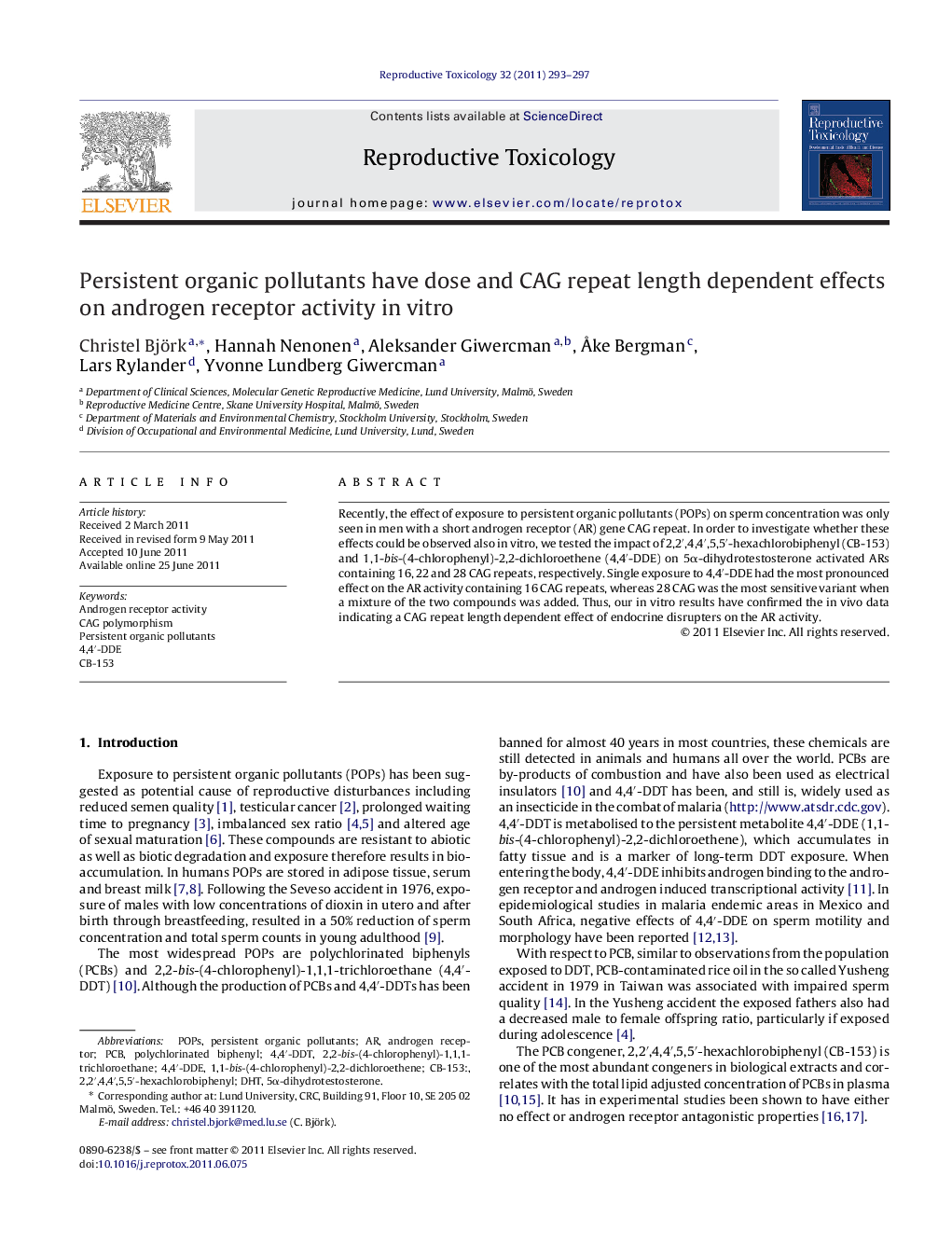| Article ID | Journal | Published Year | Pages | File Type |
|---|---|---|---|---|
| 2594023 | Reproductive Toxicology | 2011 | 5 Pages |
Recently, the effect of exposure to persistent organic pollutants (POPs) on sperm concentration was only seen in men with a short androgen receptor (AR) gene CAG repeat. In order to investigate whether these effects could be observed also in vitro, we tested the impact of 2,2′,4,4′,5,5′-hexachlorobiphenyl (CB-153) and 1,1-bis-(4-chlorophenyl)-2,2-dichloroethene (4,4′-DDE) on 5α-dihydrotestosterone activated ARs containing 16, 22 and 28 CAG repeats, respectively. Single exposure to 4,4′-DDE had the most pronounced effect on the AR activity containing 16 CAG repeats, whereas 28 CAG was the most sensitive variant when a mixture of the two compounds was added. Thus, our in vitro results have confirmed the in vivo data indicating a CAG repeat length dependent effect of endocrine disrupters on the AR activity.
• The CAG repeat in the androgen receptor gene determines the effects of pollutants. • This finding confirmed previously reported epidemiological results. • The effect was seen at concentrations comparable to those found in exposed humans. • At higher levels, all androgen receptor variants were equally hampered in activity.
